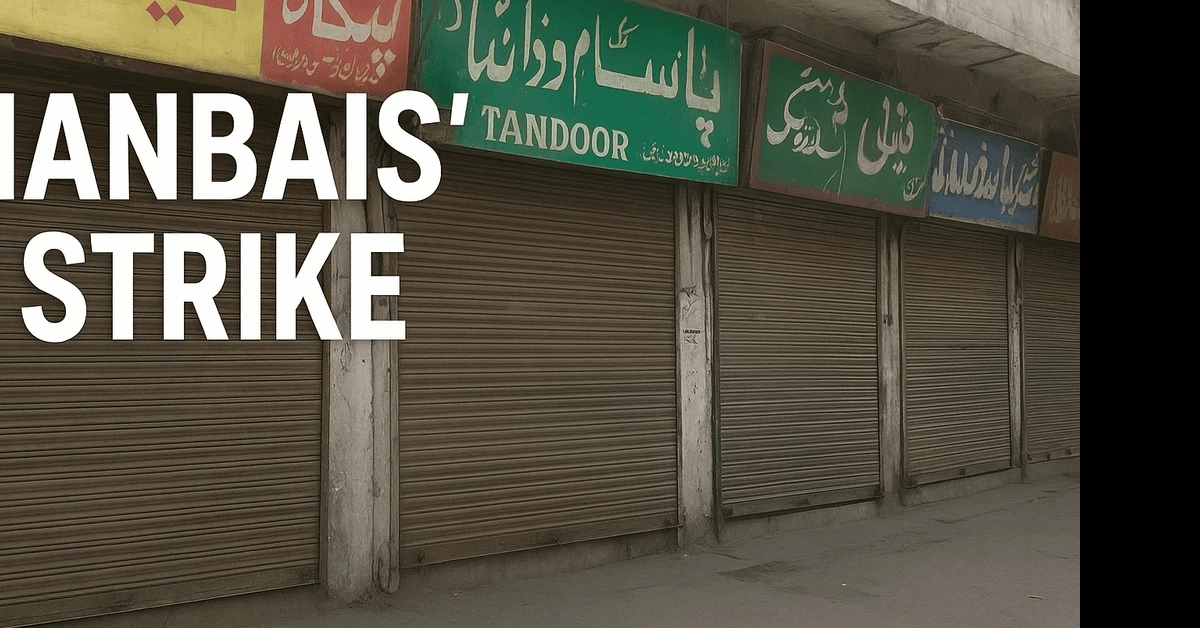Last Updated: November 8, 2025
Nanbais’ Strike in Rawalpindi Shuts 21,000 Tandoors: Bread Crisis, Rising Costs & What Happens Next

Introduction
In early November 2025, Rawalpindi witnessed a major disruption in its bread supply. The Nanbai Association declared an indefinite strike, closing approximately 21,000 tandoors across the division. Households, students, office-goers, and small eateries were impacted, highlighting tensions between rising input costs, regulatory pressure, and small-business sustainability.
Timeline of Events
On 4 November 2025, the Nanbai Association announced that most tandoors would remain closed from 5 November until their demands were addressed. Their key demands included relief from surging flour and maida prices, reduction of fines, and uninterrupted gas supply.
By 6 November, the strike was fully in place, causing widespread disruption to breakfast routines and local eateries. The association warned that the strike could expand across Punjab if the government failed to respond.
Reasons Behind the Strike
- Rising input costs: Red wheat flour price doubled from Rs 5,500 to Rs 10,500 per 50-kg bag; maida increased from Rs 6,200 to Rs 12,000.
- Fuel and gas shortages: Many tandoors rely on expensive LPG cylinders due to limited natural gas supply.
- Regulatory fines: Sealing of tandoors and fines imposed by authorities further increase operational costs.
- Low selling prices: The regulated roti price (~Rs 14) remains too low to cover rising expenses.
- Threat to livelihoods: Many tandoor owners claim the business is no longer viable under current conditions.
Immediate Impact
- Consumers: Students and workers missed their regular tandoor breakfast.
- Small eateries: Tea stalls and small hotels faced bread shortages.
- Bakeries benefited: Households and shops turned to bakeries for bread, increasing bakery sales.
- Price risk: Potential for informal price hikes if disruption continues.
What to Expect Next
Short-Term
- Negotiations with government authorities may determine the strike duration.
- Strike may expand across Punjab if demands are ignored.
- Alternate bread suppliers may face strain; price adjustments possible.
Medium-Term
- Policy responses may include subsidized flour, reduced fines, or adjusted selling prices.
- Tandoor owners may modify operations, fuel sources, or consolidate businesses.
- Prolonged disruption may affect public sentiment and political pressure.
Worst-Case Scenario
A province-wide strike could lead to bread shortages, unregulated supply, and market instability.
Broader Implications
- Staple affordability for low-income households may be impacted.
- Input cost inflation affects the broader food-service chain.
- Regulation vs. livelihood: The strike highlights the tension between enforcement and small business survival.
- Precedent for future protests: Other sectors may follow if demands succeed.
Stakeholder Recommendations
Government & Administration: Engage with the association, verify costs, provide temporary relief, review fines, consider price adjustments.
Tandoor Owners/Association: Maintain transparent communication, avoid prolonged shutdowns, explore temporary supply alternatives.
Consumers & Vendors: Diversify bread sources, monitor prices, support solutions for staple-food stability.
Conclusion
The Nanbai strike in Rawalpindi is a critical indicator of stress in Pakistan’s staple-food ecosystem. 21,000 tandoors closing affects households, vendors, eateries, and regulators. Rising costs, regulatory pressure, and fixed prices have created this crisis. Swift, transparent negotiations and adaptive policies are essential to restore normalcy.
Frequently Asked Questions (FAQs)
Q1. Why are the tandoors shutting down?
A1. Rising flour and fuel costs, combined with fines and low regulated prices, make operations unsustainable.
Q2. How many tandoors are affected?
A2. Approximately 21,000 tandoors across Rawalpindi Division are closed.
Q3. What is causing the input-cost spike?
A3. Doubling of flour and maida prices, expensive LPG fuel, increased labor, and regulatory fines.
Q4. Will roti/naan prices rise?
A4. Possibly. Vendors may increase prices if the disruption continues; bakery alternatives may also cost more.
Q5. What can consumers do?
A5. Switch to bakery bread, monitor prices, and support measures that stabilize the staple-food supply.
You May Also Like:

WNBA Pay Us What You Owe Us Rally: Why Players Are Demanding Fair Pay and What Happens Next...

The New Era of Immigration: Stricter Rules, Higher Costs, But Hope Still Exists...

You Could Be Fined €3,000 Over Your Burqa — Italy’s New Bill Explained...

This AI Just Took Over a Job You Thought Was Safe — Is Yours Next?...

Pakistan’s Next Babar Azam? Maaz Sadaqat’s Heroics Leave Fans Stunned...

Shahid Khaqan Abbasi Suffers Heart Attack: What We Know, What It Means and What Comes Next...

The Silent Strain: How Remote Work is Fueling a Global Mental Health Crisis...

